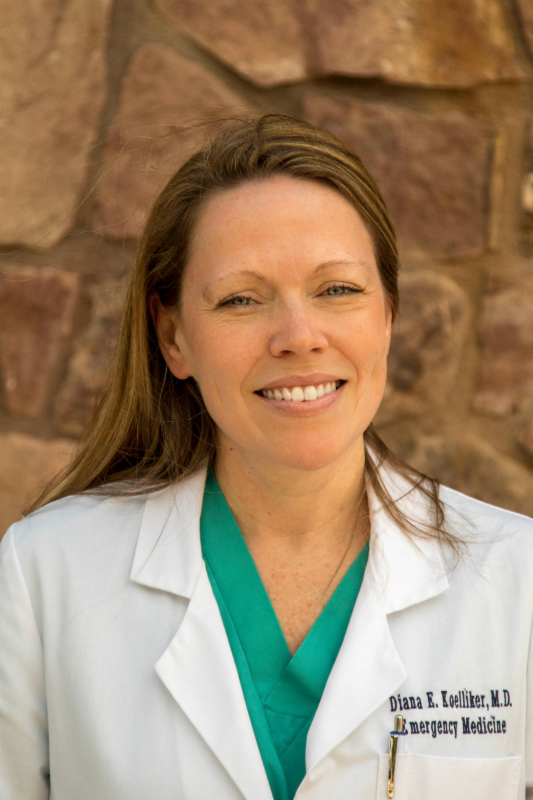
01 May Medical Moment: Don’t put off emergency care, team is there for you!
For further information, go to tellmed.org/coronavirus. For more San Miguel County updates, go here.

Dr. Diana Koelliker
Emergency rooms everywhere are seeing a marked decrease in patient volume — we suspect for a number of reasons.
For starters, with so many people sheltering at home, there are less car, work and sport-related accidents.
But another reason may be, when we told you to stay home to flatten the coronavirus curve, you listened. Maybe too well.
What we see now are patients avoiding or putting off care out of concern they’ll burden health care workers or out of fear of exposure to coronavirus.
This is an overcorrection.
If you experience stroke-like symptoms, have abdominal pain, chest pain, a laceration or require any immediate care whatsoever— we need to see you!
We’re here for you 24/7.
Our staff is not overwhelmed, our facility is not at capacity and our emergency department is safe.
Staff wear PPE, patients with respiratory symptoms are seen at our Outdoor Respiratory Clinic and we maintain two negative airflow rooms for patients with respiratory symptoms who do need to be seen within the walls of the clinic.
There are health care conditions deadlier than COVID-19. If you’re having cardiac or stroke-like symptoms, dial 911.
We have noted an increase in patients with lacerations who waited too long to be seen. We’ve also encountered an uptick in ruptured appendices, which typically indicates someone has stayed home too long (maybe even days) with symptoms of fever and abdominal pain.
Most emergencies are time sensitive. When seen close to the onset of symptoms, we can diagnose an appendicitis before a rupture occurs.
Likewise, with lacerations — particularly on certain parts of the body, hands or face — if we don’t close those wounds right away, there may be an increased risk of infection and scarring.
Something else to look for are stroke-like symptoms. The treatment of strokes are incredibly time sensitive. The earlier we see a patient, the better the chances are we can administer life-saving clot busting medication or transfer a patient to a stroke center for more directed care. Ideally we hope to see stroke patients within three hours of the onset of symptoms.
Always dial 911 for stroke symptoms:
• Sudden numbness or weakness in the face, arm, or leg, especially on one side of the body
• Sudden confusion, trouble speaking, or difficulty understanding speech
• Sudden trouble seeing in one or both eyes
• Sudden trouble walking, dizziness, loss of balance, or lack of coordination
• Sudden severe headache with no known cause
Avoiding a visit to the emergency room can lead to escalating conditions and worse patient outcomes. Minutes matter! Time is life!
Another phenomenon seen around the state is an increase of at home cardiac arrests. We think this is due to patients ignoring the signs of coronary artery disease or heart attack and staying home instead of dialing 911 or coming to the ER.
Heart disease is the leading cause of death in the US. Never ignore these symptoms:
• Pressure, tightness, pain, or a squeezing or aching sensation in your chest or arms that may spread to your neck, jaw or back
• Nausea, indigestion, heartburn or abdominal pain
• Shortness of breath
• Cold sweat
• Fatigue
• Lightheadedness or sudden dizziness
If you’re unsure about whether or not you need emergency care, call the medical center: (970) 728-3848.
Outside of regular business hours dial (970) 729-1089 to speak to our on-call Emergency Physician.
Local EMS are ready to safely transport patients to our emergency room, 24/7.
Our emergency team hopes to never see you, but we are 100 percent here for you when you need us!
Sincerely,
Diana Koelliker, MD


Sorry, the comment form is closed at this time.